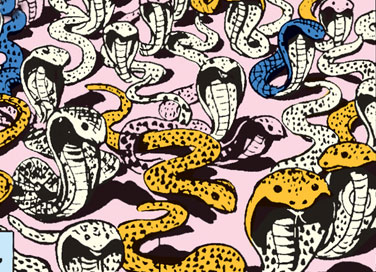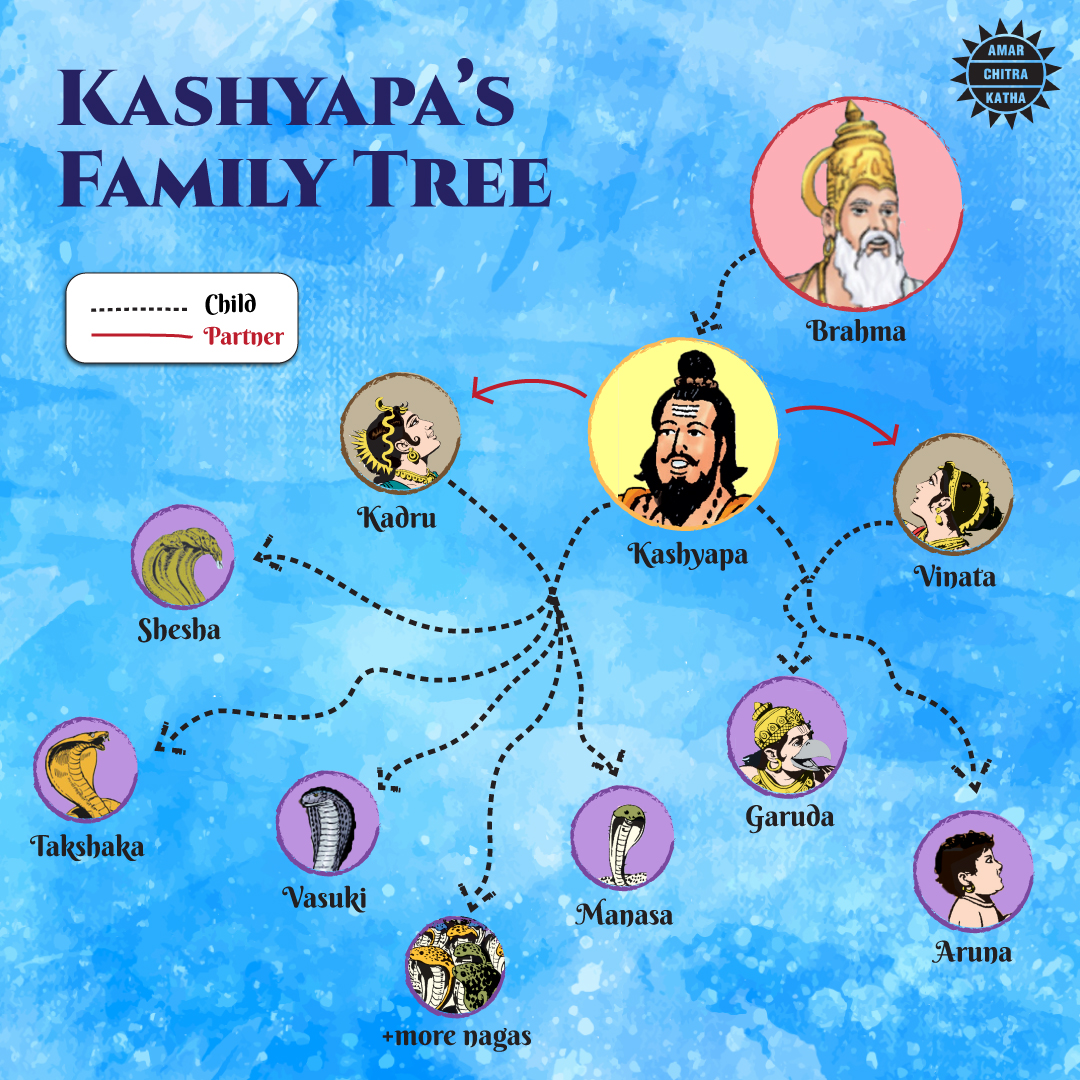Kashyapa and Nagas
- March 31, 2021


Kashyapa and Nagas
- March 31, 2021
By Shivam Pathania

Nagas are one of the most prominent mythological beings mentioned in the Hindu scriptures. They are supernatural serpents in Hindu mythology and are depicted as either complete serpents, complete humans with multiple snake hoods emerging from their back, beings with half-snake and half-human body, and some having the ability to shapeshift between these forms. They are said to live in Patal Lok, an aquatic realm under the surface of the earth that is filled with treasures, unimaginable to humankind, and anthills are often considered as holy portals to this semi-divine underworld. Apart from that underworld, Nagas also dwell in other water bodies like lakes, rivers and oceans. These divine creatures with mystical powers are synonymous with nature spirits and are a symbol of rebirth, death, fertility, immortality, medicine, health and wealth. Due to this, snake worship has been a practice in India since ancient times. An iconic festival dedicated to snakes is Nag Panchmi. People all over the country offer their prayers to these nature spirits as a part of the celebrations.
According to Mahabharata, rishi Kashyap and Kadru, daughter of Daksh, are the parents of all nagas. Out of them, Shesha was the eldest, and then came Vasuki, Manasa, and many others. Kashyapa had another wife, who was also Kadru’s sister, Vinata. She gave birth to Vishnu’s vahana, Garuda, an eagle-human hybrid and he became the arch-nemesis of the nagas since eagles consume snakes. In the Ramayana, Indrajit used the Nagapasha astra on Rama and Lakshmana, which hurled venomous snakes over them. The two fell unconscious and Garuda came to their rescue. He got rid of the venomous snakes. There are various stories of enmity between Garuda and nagas in the scriptures, which depict the aggressive nature of the nagas. But on the contrary, there are also some nagas that are mentioned in the scriptures for their good deeds, in both Vaishnavism and Shaivism.
To receive more such stories in your Inbox & WhatsApp, Please share your Email and Mobile number.
To receive more such stories in your Inbox & WhatsApp, Please share your Email and Mobile number.

Comic of The Month
The Naval Journey of India Book I
This book is the first of a three-book series that takes a deep and detailed look at India's Naval History and a deep insight into the lives of our men and women in white. But any series on the Indian Navy has to start at the very beginning - exploring India's celebrated maritime history. Join our little hero, Bharat, and his grandfather, Commodore Sagar, as they sail into the deep blue waters of time. Book I of The Naval Journey of India takes a sweeping look at India's maritime endeavours, how the seas impacted us over millennia and how the oceans made us who we are.